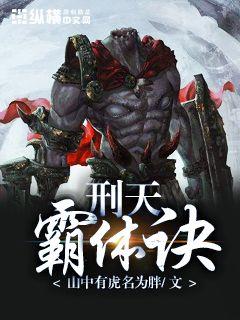国足VS日本直播|国足世预赛直播免费在线观看
- 来源:国足对日本直播比赛
- 2024-11-22 09:24:36

Certainly! Here's the structured article about S. Devrij, a Dutch defender, focusing on his football career and technical style.
**Article Abstract:**
Stefan de Vrij, renowned for his defensive prowess and tactical acumen, exemplifies the modern Dutch defender. From his formative years to international acclaim, his journey unfolds through a blend of strategic insight, defensive resilience, and leadership on the field. This article delves into his career trajectory, technical attributes, tactical impact, and the broader influence of his playing style within contemporary football.
---
1、Early Career and Development
Stefan de Vrij's early years in football laid the foundation for his future success. Born in Ouderkerk aan den IJssel, Netherlands, on February 5, 1992, he displayed promise from a young age. He joined the youth academy of Feyenoord Rotterdam, where his defensive abilities quickly stood out. De Vrij's positional awareness and composure under pressure were evident even in his formative years, attributes that would define his career.
His progression through Feyenoord's ranks was marked by consistent improvement in both technical skills and tactical understanding. By the time he made his first-team debut in 2009, he had already established himself as a reliable central defender. De Vrij's ability to read the game and initiate attacks from the backline showcased his versatility beyond defensive duties.
As he continued to mature, De Vrij became a pivotal figure in Feyenoord's resurgence in Dutch football. His leadership qualities began to shine through, earning him the captain's armband at a young age. This period not only solidified his status as one of the top defenders in Eredivisie but also caught the attention of European clubs scouting for defensive talent.
2、Technical Skills and Defensive Prowess
De Vrij's technical prowess as a defender sets him apart in contemporary football. His exceptional ability to time tackles and interceptions with precision reflects his astute reading of the game. Known for his aerial dominance and strong positional play, he combines physicality with tactical intelligence seamlessly.
His passing accuracy and distribution from the backline are crucial in building play from defense to attack. De Vrij's proficiency in initiating attacks through long balls and short, incisive passes adds a dynamic dimension to his defensive role. This technical finesse not only stabilizes his team defensively but also contributes significantly to offensive transitions.
Moreover, his adaptability across different defensive systems highlights his versatility. Whether operating in a back four or three, De Vrij's understanding of defensive lines and covering spaces remains consistent, a testament to his tactical flexibility and football IQ.
3、Tactical Impact and Leadership
De Vrij's tactical impact extends beyond his individual contributions. His ability to organize and communicate effectively on the field enhances defensive cohesion. His leadership qualities, honed over years of experience, guide younger teammates and influence team strategies during matches.
Within the Netherlands national team setup, De Vrij's presence has been instrumental. His performances in major tournaments such as the UEFA European Championship and FIFA World Cup underline his ability to thrive under pressure. His partnership with other defenders and coordination with the goalkeeper exemplify his role as a defensive linchpin.
Off the ball, De Vrij's anticipation and reading of opposition movements allow him to neutralize threats effectively. His awareness of defensive transitions and quick decision-making contribute to his team's overall defensive solidity.
4、Legacy and Influence in Modern Football
Stefan de Vrij's career trajectory and technical acumen have left a lasting impact on modern football. His journey from Feyenoord to prominent European clubs like Lazio and Inter Milan signifies his international stature as a defender. Beyond his club achievements, De Vrij's role in the resurgence of Dutch football on the global stage underscores his influence.
His style of play, characterized by intelligence, composure, and defensive reliability, serves as a benchmark for aspiring defenders worldwide. De Vrij's ability to evolve with the tactical demands of the game reflects his dedication to continuous improvement and professional excellence.
In conclusion, Stefan de Vrij's career illuminates the essence of a modern-day defensive stalwart. His technical mastery, tactical astuteness, and leadership qualities have not only earned him accolades but also inspired a new generation of defenders to emulate his success.
Stefan de Vrij stands as a testament to the enduring value of defensive excellence in football, shaping the narrative of defensive play in contemporary football.
总结:
Stefan de Vrij's career highlights his exceptional technical skills, tactical acumen, and leadership on and off the field. His influence extends beyond his clubs to the broader football community, setting a high standard for defenders worldwide.
Certainly! Here's a structured article on the comparison and influencing factors of CBA and NBA basketball players, as per your instructions:
**Abstract:**
In this comprehensive analysis, we delve into the nuanced differences between CBA (Chinese Basketball Association) and NBA (National Basketball Association) players. Exploring various aspects such as playing style, training regimen, cultural impact, and economic factors, this article sheds light on how these leagues shape and define their respective basketball talents.
---
1、Playing Style
Chinese Basketball Association (CBA) and National Basketball Association (NBA) players exhibit distinct playing styles influenced by league norms, coaching philosophies, and player backgrounds.
In the CBA, players often emphasize teamwork and structured offensive strategies, reflecting cultural values of harmony and collective effort.
Conversely, NBA players showcase more individualistic play, characterized by athleticism, creativity, and a focus on highlight-reel plays that appeal to a global audience.
2、Training Regimen
The training methods employed in the CBA and NBA play a pivotal role in shaping player development and performance.
CBA training emphasizes fundamentals, endurance, and disciplined drills, aimed at fostering technical proficiency over improvisational skills.
NBA training integrates cutting-edge sports science, personalized conditioning programs, and access to state-of-the-art facilities, contributing to elite athleticism and versatility.
These differing approaches reflect each league's investment in player development and performance enhancement.
3、Cultural Impact
Both leagues have distinct cultural impacts that influence player identities and league dynamics.
In China, CBA players are cultural icons, embodying national pride and serving as role models for aspiring young athletes.
Conversely, NBA players are global ambassadors of basketball, influencing fashion trends, social media discourse, and transcending cultural boundaries.
The cultural contexts in which players operate shape their public personas and off-court influence.
4、Economic Factors
Economic considerations profoundly impact player recruitment, salaries, and league competitiveness in the CBA and NBA.
CBA teams operate within financial constraints compared to NBA franchises, affecting player salaries, league parity, and talent retention.
Contrastingly, NBA's lucrative broadcasting deals, sponsorship agreements, and global marketability elevate player earning potentials and league financial stability.
These economic landscapes dictate career trajectories and league sustainability for players in both basketball ecosystems.
总结:
Through examining the playing style, training regimen, cultural impact, and economic factors of CBA and NBA basketball players, it becomes evident that while both leagues share a passion for basketball, their divergent approaches shape unique player profiles and league dynamics. The CBA emphasizes teamwork and technical proficiency, fostering national pride and collective achievement among players. In contrast, the NBA celebrates individual athleticism and global appeal, driving innovation and cultural influence worldwide. Understanding these distinctions is crucial for appreciating how each league contributes to the broader landscape of professional basketball.
Ultimately, these factors underscore the dynamic interplay between sports, culture, and economics in shaping the careers and legacies of basketball players on a global stage.
文章摘要:本文探讨了NBA球员在面对税务挑战时的应对策略。通过分析税务管理、职业生涯特点、个人财务规划以及法律顾问的角色,揭示了球员如何有效应对税务压力,保障财务健康。
1、税务管理的重要性
税务管理对NBA球员至关重要。球员通常面临跨州比赛和各地税法的复杂情况,合理的税务策划可以最大化收入。首先,球员应了解居民状态和比赛地点的税收影响。
其次,球员可以通过成立个人公司或基金会来推迟税款支付,以此规避高额个人所得税。
最后,定期与财务专家磋商是确保遵守税法并最大化节税的关键。
2、职业生涯特点的考虑
NBA职业生涯短暂而高收入。球员在短时间内获得大量收入,这需要精心管理和规划。首先,职业生涯初期球员需建立财务基础,如购买房产和投资组合。
其次,职业生涯后期,球员应通过投资多样化和退役规划保障未来收入。这包括聘请理财顾问和税务专家,确保财富的长期保值和增值。
最后,职业生涯结束后,合理的财务安排可以帮助球员顺利过渡到退役生活,减少金钱压力。
3、个人财务规划的重要性
个人财务规划是NBA球员在面对税务挑战时的关键因素。首先,球员应建立紧密的预算和开支监控系统,以确保收入的合理分配和支出的可持续性。
其次,球员可以通过智能投资和财务组合来最大化资本增值,并在税务管理方面获取优势。
最后,球员应关注个人税收优惠政策,如退休账户的税收延迟和慈善捐赠的税收减免。
4、法律顾问的角色
法律顾问在NBA球员的税务策划中扮演关键角色。首先,顾问能够为球员提供针对性的法律建议,确保税务合规性和最小化税务风险。
其次,顾问可以帮助球员处理合同和商业协议中的税务条款,以及处理不同税务管辖区域的复杂税务问题。
最后,法律顾问还可以为球员提供紧急支持,如税务审计和争议解决,以保护球员的权益和财务安全。
总结:
综上所述,NBA球员面对税务挑战时,通过有效的税务管理、职业生涯特点的考虑、个人财务规划和法律顾问的支持,可以确保财务健康和长期财富的保值增值。这些策略不仅帮助球员在职业生涯期间最大化收入,还为退役后的生活提供了稳定的经济基础。
税务挑战并非不可逾越的障碍,而是需要系统性和专业性应对的问题。通过这些策略的整合,NBA球员可以在税务管理上取得成功,从而更好地专注于他们的比赛和职业生涯。
文章摘要的内容:
现役D球员盘点:顶尖后卫们的技术与战术全貌。本文从技术和战术两大方面入手,深入探讨了现今足坛顶级后卫们的表现。首先,我们将分析他们在防守、传球和进攻支援等技术层面的突出表现,揭示其背后的战术智慧与团队角色。其次,通过战术调控、空间控制和整体战术中的作用,剖析他们如何在比赛中发挥关键作用。最后,通过多角度的分析和对比,总结现役顶级后卫们如何在技术与战术上不断创新与完善,成为球队不可或缺的关键因素。
1、技术层面的表现
现代足球后卫不仅需要出色的防守技术,还要具备优秀的传球和进攻能力。顶尖后卫们在防守端展现出精准的抢断和位置感应,比如短传和长传中的准确性以及面对单刀球时的果断反应。
在传球方面,他们不仅限于简单的横传和直传,而是通过妙传和斜传来创造进攻机会,有效地连接中场和前场。
此外,顶级后卫们在进攻支援方面也有出色表现,他们能够参与到进攻组织中,利用身体优势和战术位置制造混乱,为前场球员创造空间和机会。
2、战术调控与空间控制
现代足球战术需要后卫们具备良好的战术意识和调控能力。顶尖后卫通过分析对手的进攻方式,准确地预判和阻止对手的进攻路线,从而有效地保护球门。
他们在场上能够通过灵活的移动和适时的压迫来控制空间,限制对手的传球线路和射门角度,确保球队在防守时的稳固性。
此外,顶级后卫们还能够在防守过渡到进攻时快速转换角色,通过长传或短传将球传送到对手半场,为球队快速反击创造条件。
3、整体战术中的角色与贡献
顶级后卫在整体战术中扮演着关键的角色,他们不仅仅是防守的最后一道屏障,还是战术体系中的重要组成部分。他们的防守稳固性和传球能力直接影响到球队的整体表现。
在进攻时,他们能够通过定位球和角球为球队创造得分机会,同时在防守角球和定位球时展现出优异的空中优势和头球能力。
此外,顶尖后卫们在防守组织和团队配合中也发挥着重要作用,他们能够带领后防线上下协调行动,保持整体的紧密性和稳定性。
4、创新与完善的技术与战术
现代足球的发展使得后卫的角色不断演变和完善,顶级后卫们通过持续的技术训练和战术磨合,不断创新出适应现代战术需求的防守方式和进攻支援策略。
他们在比赛中的表现不仅仅是个人能力的体现,更是团队战术的有机组成部分。顶级后卫们通过自身的努力和智慧,为球队带来稳定的防守和多样化的进攻选择。
总的来说,现役顶尖后卫们在技术和战术上的全面表现,不仅展示了他们个人的实力,更反映了现代足球后卫角色的演变和提升。
总结:
现役顶尖后卫们不仅在技术层面表现出色,在战术调控和整体战术中也展现了重要作用。他们通过持续的技术训练和战术磨合,为球队带来稳定的防守和多样化的进攻选择,成为球队不可或缺的关键因素。
他们的角色不仅限于防守的最后一道屏障,还包括战术体系中的重要组成部分,通过他们的努力和智慧,现代足球后卫的角色得到了极大的丰富和完善。
文章摘要的内容
随着全球化进程的加快,球员归化现象在足球界愈加显著,不仅重构了球员的国籍身份,也带来了足球领域的深刻变革。本文将从法律与道德、竞技与竞争、文化与身份、以及影响与前景四个方面深入探讨,分析球员归化的多重层面及其对足球世界的全面影响。
1、法律与道德
在法律层面,球员归化引发了国际足联和国家足协对规则的重新审视。随着归化现象增多,法律框架需要适应足球发展的新需求,以保证比赛的公平性和竞争性。
道德上的争议也随之而来,涉及国家认同和职业道德的冲突。球员的归化选择不仅关乎个人利益,也牵涉到国家形象与文化认同的深刻讨论。
这一过程不仅是法律规则的更新,更是全球化背景下道德标准的重新设定,对足球的长远发展具有深远影响。
2、竞技与竞争
归化现象显著增加了球队的竞争力,但也带来了竞技公平性的争议。随着顶级球员的加入,国际比赛的竞争愈加激烈,这对发展中国家的足球队伍尤为重要。
同时,归化现象也提升了足球市场的吸引力和商业潜力,但这背后也伴随着转会市场的不确定性和球员选择的伦理挑战。
竞技与竞争的平衡成为足球界和国际体育组织需要解决的核心问题,影响着足球运动的长远发展路径。
3、文化与身份
足球作为全球性文化现象,归化现象也带来了文化认同的多样性和复杂性。球员的国籍选择不仅关乎个人身份,也深刻影响着国家和地区的文化形象。
归化球员的文化背景和社会认同感成为促进文化多样性和包容性的重要力量,但也引发了文化认同和足球身份之间的矛盾与调解。
这一过程既是文化全球化的体现,也是足球运动中文化认同多元化的必然结果。
4、影响与前景
球员归化潮涌不仅在当今足球界产生了深远影响,也为未来足球的发展开辟了新的前景。通过多国籍球员的加入,足球在全球范围内实现了更广泛的影响力和认同度。
然而,面对全球化带来的挑战和机遇,国际足联及其成员协会需要在法规制定、文化交流和体制建设方面保持持续的关注和调整。
归化现象的发展趋势将对未来足球的发展路径和全球体育治理产生深远影响,需要各方共同努力促进其良性发展。
总结:
球员归化潮涌不仅重构了球员的国籍身份,也带来了足球领域的多重变革。在法律与道德、竞技与竞争、文化与身份、影响与前景等多个方面,归化现象都显现出其深刻的影响力和复杂性。随着全球化的推进,球员归化将继续在国际足球舞台上发挥重要作用,其发展趋势将对未来足球的全球化、文化交流和体制建设产生深远影响。
文章摘要的内容
随着技术和体育规则的发展,替换罚球球员规则成为了一种备受关注的趋势。本文探讨了这一规则的实施及其带来的多方面影响,包括对比赛节奏、球员技术和战术策略的改变,以及对体育文化和观众体验的深远影响。
1、实施的背景与原因
在这一部分,将详细探讨替换罚球球员规则的背景,包括现行罚球规则的局限性和出现替代方案的动机。首先分析现行罚球规则存在的问题,例如长时间比赛中频繁罚球对比赛流畅度的影响。其次介绍新规则的提出及其解决问题的理念,包括技术进步和运动科学的支持。
接着,讨论实施该规则的利弊,包括对裁判员判罚的要求、比赛战术的调整,以及可能的争议和调整过程中的困难。
最后,分析国际篮联和其他体育组织在推广和实施过程中的角色,以及规则修改对不同篮球联赛和赛事的适应情况。
2、对比赛节奏的影响
在这一部分,探讨替换罚球球员规则对比赛节奏的直接和间接影响。首先分析新规则如何减少比赛中的停顿时间,提高比赛的动态性和观赏性。
然后,讨论球员和球队在适应新规则过程中的策略调整,包括对防守策略、进攻战术和球员体能的要求。
最后,分析这种节奏变化如何影响比赛的结果和观众的参与感,以及如何评估新规则在实际比赛中的效果。
3、对球员技术和战术的影响
本部分将详细探讨替换罚球球员规则对篮球运动员个人技术和整体战术的影响。首先分析新规则如何促进球员技术的全面发展,特别是罚球技术的重视和其他技术要素的提升。
然后,讨论新规则对球队战术策略的调整,包括快攻和防守策略的变化,以及如何在比赛中利用新规则的优势。
最后,分析这种影响如何在不同层次的篮球比赛中展现,并对未来篮球运动的技术发展做出展望。
4、对体育文化和观众体验的影响
在这一部分,探讨替换罚球球员规则对篮球体育文化和观众体验的深远影响。首先分析新规则如何改变球迷的观赛体验,包括比赛节奏的改变和情绪的表达。
接着,讨论新规则对篮球文化和传统的影响,包括篮球精神的演变和社会对比赛规则变化的接受度。
最后,分析这种影响如何在全球范围内扩展,以及篮球作为全球体育的未来发展方向。
总结:
通过对替换罚球球员规则的实施及其影响的全面分析,可以看到这一变革不仅在技术和战术层面带来了显著的改变,也深刻影响了篮球运动的文化和观众体验。未来,随着这一规则的进一步推广和完善,篮球运动将迎来新的发展机遇。
这种规则的变革不仅在技术和战术层面带来了显著的改变,也深刻影响了篮球运动的文化和观众体验
荷兰注册足球球员:数据分析与职业生涯综述,是一篇关于荷兰国内注册足球运动员的详尽分析与总结。本文从数据分析、球员职业生涯特征、技战术风格以及国际影响四个方面展开论述。通过深入挖掘荷兰足球的数据趋势和球员的职业发展路径,揭示荷兰足球在国际舞台上的独特影响力。
1、数据分析
荷兰足球数据分析是理解该国球员特点的关键。首先,荷兰足球培训体系的数据驱动策略,使得球员在技术、身体素质和战术认知上表现出色。其次,通过比较不同年龄段球员的统计数据,可以发现荷兰年轻球员的成长轨迹和发展潜力。
荷兰足球数据普及率高,这为球探和俱乐部提供了充足的市场信息,助力球员的选秀和转会。最后,通过详细分析荷兰联赛和欧洲顶级联赛的数据对比,展示荷兰球员在不同赛事中的表现和数据分布特点。
荷兰足球的数据驱动模型为球员职业生涯提供了坚实的基础,同时也影响了整个欧洲及国际足球的发展趋势。
2、球员职业生涯特征
荷兰注册球员的职业生涯特征不仅体现在技战术层面,还涉及到他们的职业选择、发展轨迹和俱乐部间的转会。首先,荷兰球员在青训和职业生涯初期阶段的特殊培训模式,对其后的职业生涯起到了关键性作用。
其次,荷兰球员在国内联赛和国际赛事中的表现及其职业生涯高峰与低谷的数据对比分析,揭示了他们在不同赛事和时段的竞技状态和技术发展路径。
最后,荷兰球员在国际足坛的影响力,以及其代表国家队参加国际大赛时的表现和统计数据分析,展示了荷兰足球在全球范围内的重要地位和影响力。
3、技战术风格
荷兰足球的技战术风格深受其培训体系和教练理念的影响。首先,荷兰足球的传球控球风格及其在比赛中的数据分析,体现了荷兰球员在球场上的独特技战术特征。
其次,荷兰球员在不同位置上的技术统计和战术贡献分析,揭示了他们在球队战术体系中的角色定位和战术执行能力。
最后,通过荷兰球员在国际比赛中的技术统计和战术数据分析,展示了荷兰足球在国际舞台上的战术风格和竞技水平。
4、国际影响
荷兰足球在国际足坛的影响力不仅体现在球员个人层面,还涉及到荷兰足球联赛及其球员在欧洲和国际大赛中的整体表现。首先,荷兰球员在欧洲俱乐部联赛和国际比赛中的数据分析,展示了荷兰足球在全球范围内的影响力。
其次,荷兰球员在国际大赛中的代表性表现和统计数据分析,揭示了荷兰足球在国际舞台上的竞争力和影响力。
最后,荷兰足球在国际足球舞台上的历史地位和影响力,以及荷兰球员在国际足坛的领导地位和技术贡献,进一步分析了荷兰足球的国际化发展趋势和未来潜力。
总结:
荷兰注册足球球员的数据分析和职业生涯综述,通过深入挖掘荷兰足球的数据趋势和球员的职业发展路径,揭示了荷兰足球在国际舞台上的独特影响力和战术风格。荷兰足球以其丰富的数据资源和高水平的技战术表现,不仅在欧洲足坛占有重要地位,还在全球范围内具有广泛的影响力。
上一篇: 国足对日本世预赛时间地点
下一篇: 足球比赛中国对日本比分










